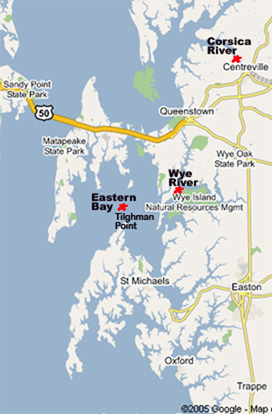|
|||
Mahogany-colored waters were reported on the Corsica River near Sycamore Point during Maryland DNRs routine water quality mapping on August 17th. An abundance of the dinoflagellate, Scrippsiella, was the organism responsible for the discoloration. Water samples collected from two stations on the Corsica River contained bloom concentrations of 11,130 and 13,000 Scrippsiella cells per milliliter. Water quality data collected by MD DNRs continuous monitoring station at Sycamore Point showed repeated spikes in concentrations of chlorophyll (an indicator of the amount of algae active in the water) over 100 ug/L coincident with spikes in pH indicative of algal bloom conditions. Dissolved oxygen levels at this location are frequently below 5 mg/L representing conditions that are stressful to many living resources in the Bay. Samples collected from discolored waters of the Wye River and Eastern Bay just north of Tilghmans Point also contained elevated concentrations of Scrippsiella in concentrations of 22,525 and 8,745 cells/ml, respectively. Dinoflagellate blooms may cause problems for fish and shellfish by replacing more nutritious algae, depleting oxygen in the water column or clogging gills, which affects an organisms ability to breathe depending on the species. Discolored bloom waters also reduce the light reaching the leaves of submerged aquatic vegetation affecting critical growth and survival requirements of the plants. However, the extent of any ecological impacts associated with this Scrippsiella bloom are not known at this time.
Maryland DNR conducts a long-term water quality monitoring program that will continue to monitor for algal bloom conditions in the Chesapeake and Coastal Bays. For up to date information on all of Maryland's harmful algal blooms and water quality, please visit Eyes on the Bay |



